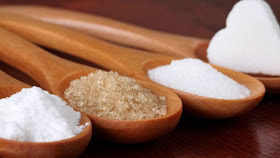Determinants of Demand/ Shifters of Demand
Conversations welcome - Econowaugh on Facebook
The shift of the demand curve means the quantity demanded changes at every price level. Factors resulting in a shift of the demand curve are non-price factors of the good. (or shifting happens with factors other than price.
Shifters of Demand
- Numbers of Consumers (size of the market)
- Income Normal Goods
- Income Inferior Goods
- Preferences
- Prices of Related Products: Substitutes
- Prices of Related Products: Complements
- Expected Future Prices by Consumers
- Expected Future Income by Consumers
Mjmfoodie doing it well:
1. Numbers of Consumers (size of the market)
Changes in the size of a market (the number of consumers) will have an effect. As the size of a market increases, demand for most products will tend to rise. As the size of the markets decreases, demand for most products will tend to rise.
Population Increase - energy and water
http://www.dailymotion.com/video/xa9tlx_population-increase-energy-and-wate_news
Population - http://www.econlib.org/library/Enc/Population.html
Population - http://www.econlib.org/library/Enc/Population.html
2. Income - Normal Goods
When income increases, the demand for normal goods will increase - shifts demand to the right
When income decreases, the demand for normal goods will decrease - shifts demand to the left
1995 AP Microeconomics Exam
Answer - (D) a normal good
2008 AP Microeconomics Exam
Answer - (B) reinforces the income effect
3. Income - Inferior Goods
When income increases, the demand for inferior goods will decrease.
When income decreases, the demand for inferior goods will increase.
2000 AP Microeconomics Exam
Answer - (D) An increase in consumer income will decrease the demand for bologna.
4. Preferences
Changes in taste and preferences affect demand. Preferences can be affected by consideration of health, weather, fashion trends, advertising etc. Ex. an increase in awareness of overweight problems will lower the demand for red meat and pastries. (Possibly)
Our preferences are influenced by all types of information. (sometimes it's difficult to know who to believe)
1995 AP Microeconomics Exam
Answer - (A) An increase in the demand for air travel. ( People's preference for flight over cars or bus travel increase the demand for aircraft mechanics.)
1995 AP Microeconomics Exam
Answer - (B) The demand curve will shift to the left, decreasing the price of beef.
2005 AP Microeconomics Exam
Answer - (B) The price of artichokes will increase. (preference for eating artichokes will increase raising demand)
5. Prices of Related Products: Substitutes
Substitutes exist for all of our wants and needs. Think of the products you have in your shower and the differing shampoos and soaps that exist in the grocery store. If the price of your favorite shampoo doubles you might decide to substitute a cheaper brand.
2000 AP Microeconomics Exam
Answer (A) An increase in the price of pizza, a substitute for hamburgers.
Answer - (D) The release of three summer movies. (In essence more movies bring more people to the movies and when people come to the movies they like to eat popcorn.)
1995 AP Microeconomics Exam
Answer - (E) complementary goods
2005 AP Microeconomics Exams
Answer - (B) An increase in the price of potatoes, if potatoes and beef are complementary goods.
2005 AP Microeconomics Exam
Answer - (B) X & Y are complementary. (This problem is easier (for me) if I add real products for the variables X &Y. )
6. Prices of Related Products: Compliments
Two goods are considered compliments if they are consumed together. Examples would include, peanut butter and jelly, toast and jam, hamburgers and french fries (chips), toothpaste and toothbrushes, coffee and sugar.
If the price of peanut butter skyrockets then we could expect the price of jelly to fall as the increase in the price of peanut butter will cause its Qd to fall which in turn will cause the demand for jelly to fall.
2000 AP Microeconomics Exam
1995 AP Microeconomics Exam
Answer - (E) complementary goods
2005 AP Microeconomics Exams
Answer - (B) An increase in the price of potatoes, if potatoes and beef are complementary goods.
2005 AP Microeconomics Exam
Answer - (B) X & Y are complementary. (This problem is easier (for me) if I add real products for the variables X &Y. )
7. Expected Future Prices by Consumers
 If you expect the price of that dress to go on sale next week you will wait until next week to buy it. If you expect that dress to increase in price next week you will usually go out and buy it now.
If you expect the price of that dress to go on sale next week you will wait until next week to buy it. If you expect that dress to increase in price next week you will usually go out and buy it now.
Expectations are powerful incentives,,, think of the milk section before a big storm hits.
8. Expected Future Income of Consumers
If you expect to get a big raise in the next month, or a big bonus you might choose to spend know knowing that you will be able to pay for your purchases later.Know these Concepts
Reffonomics - website with interactive determinants of demand.
Welker and the Determinantes of Demand - Video

















This comment has been removed by a blog administrator.
ReplyDelete